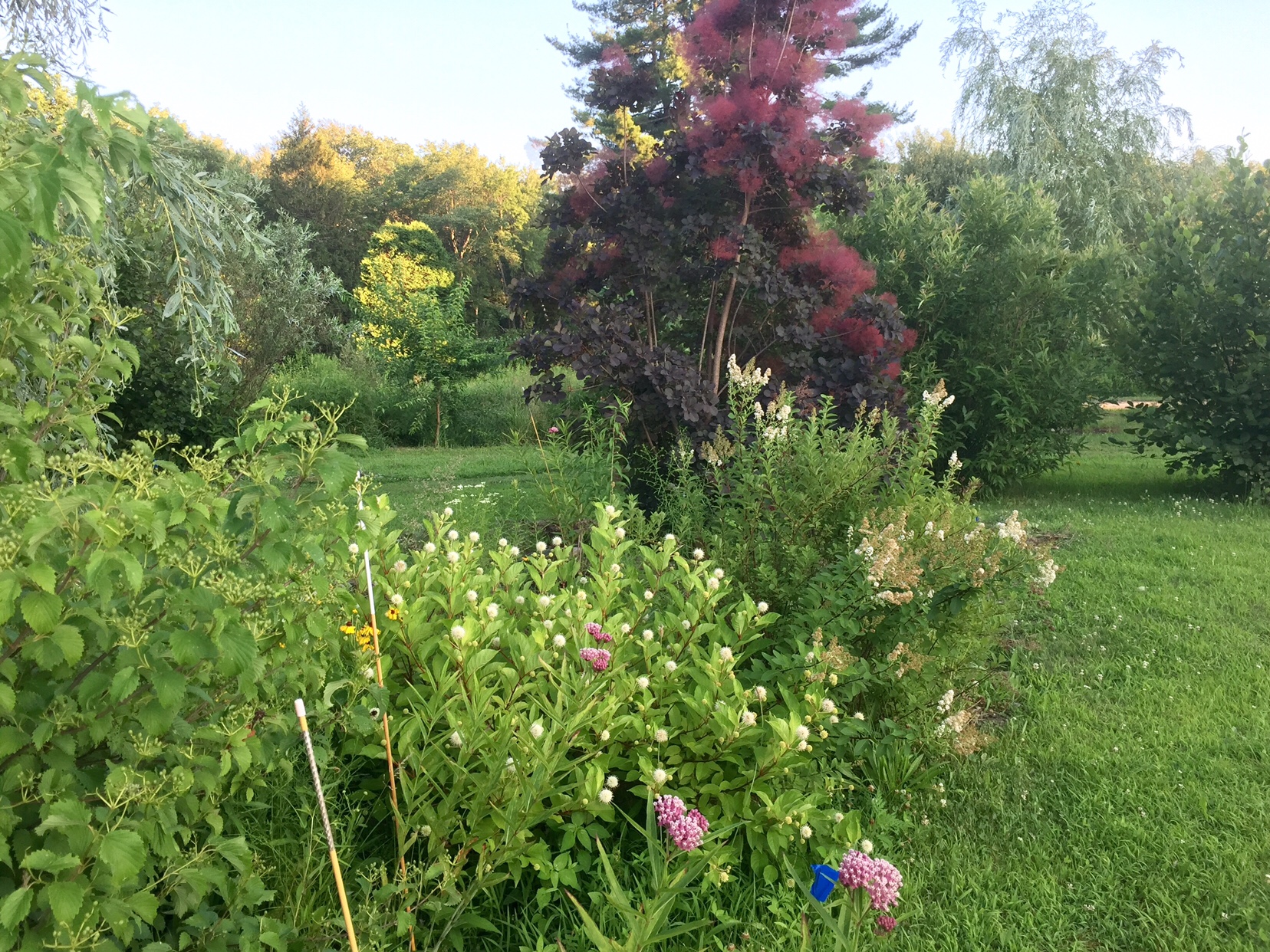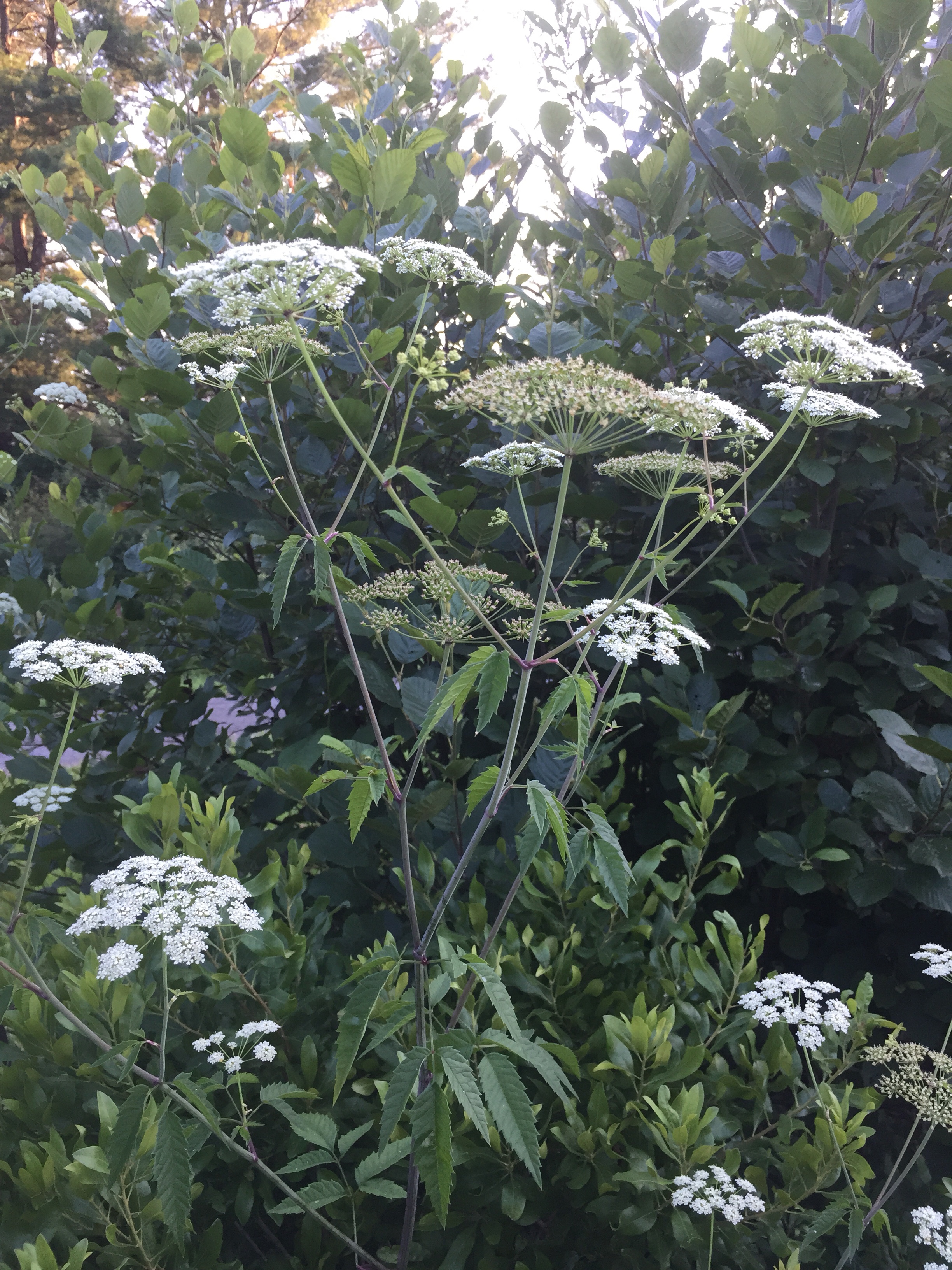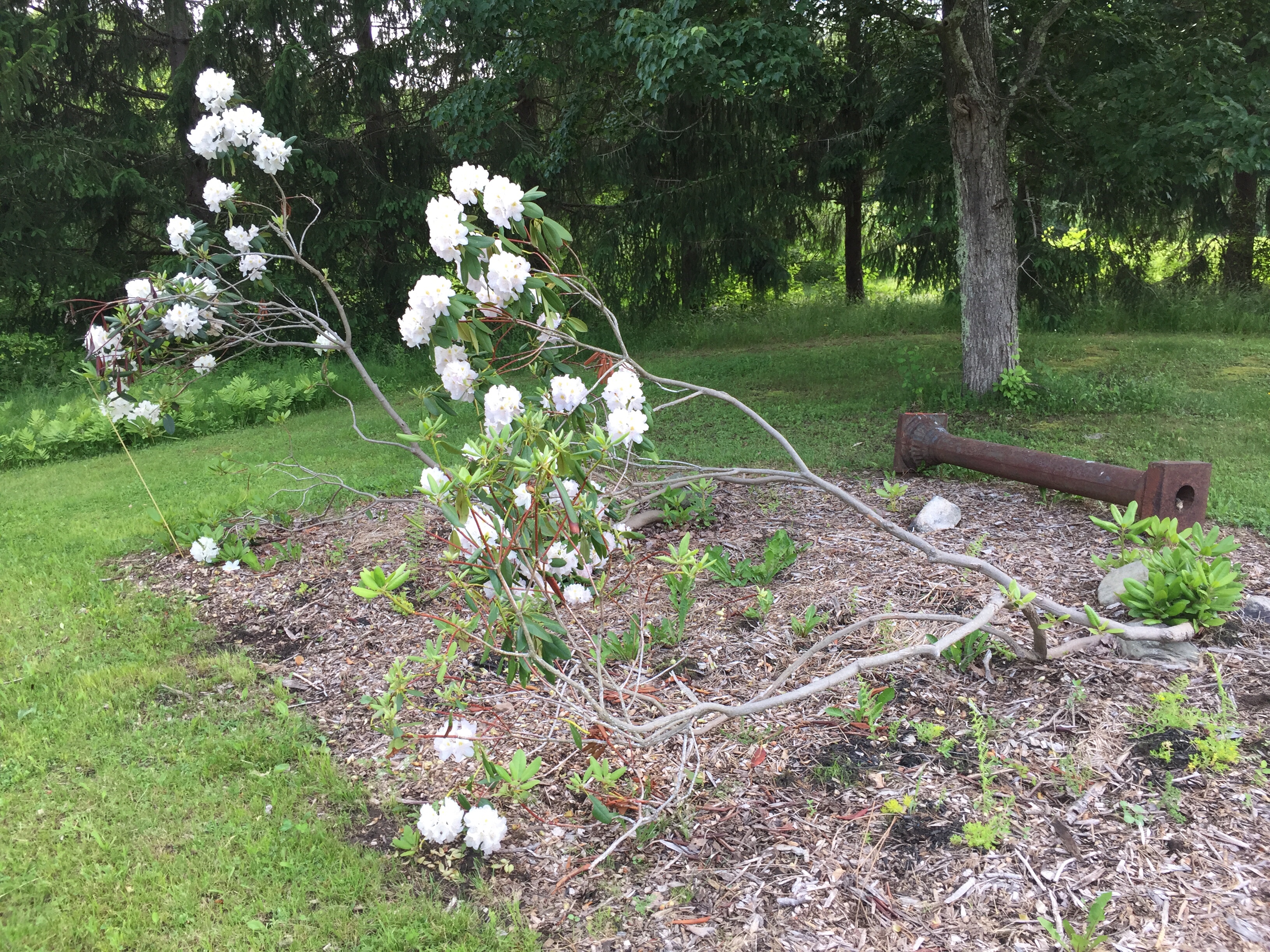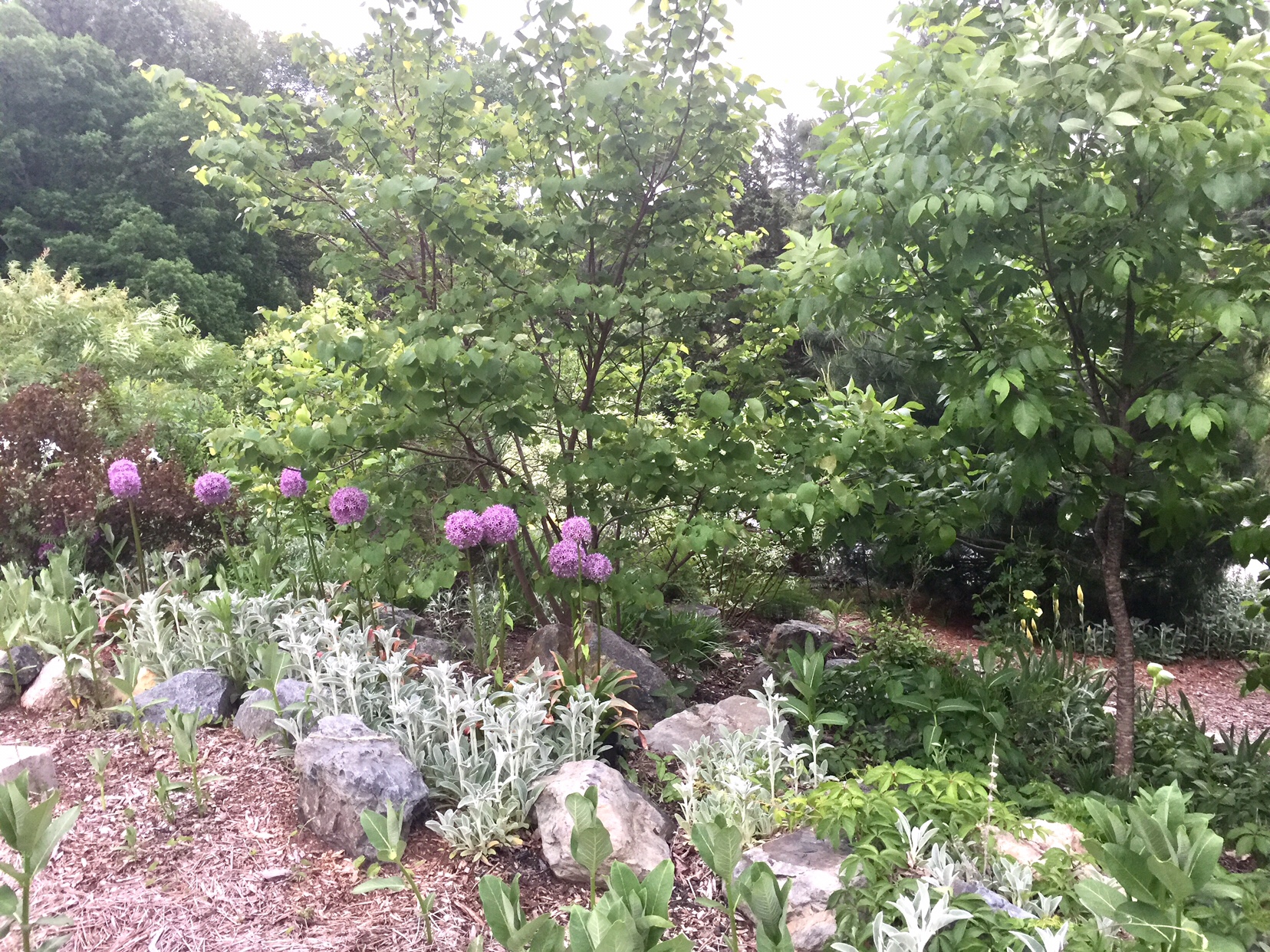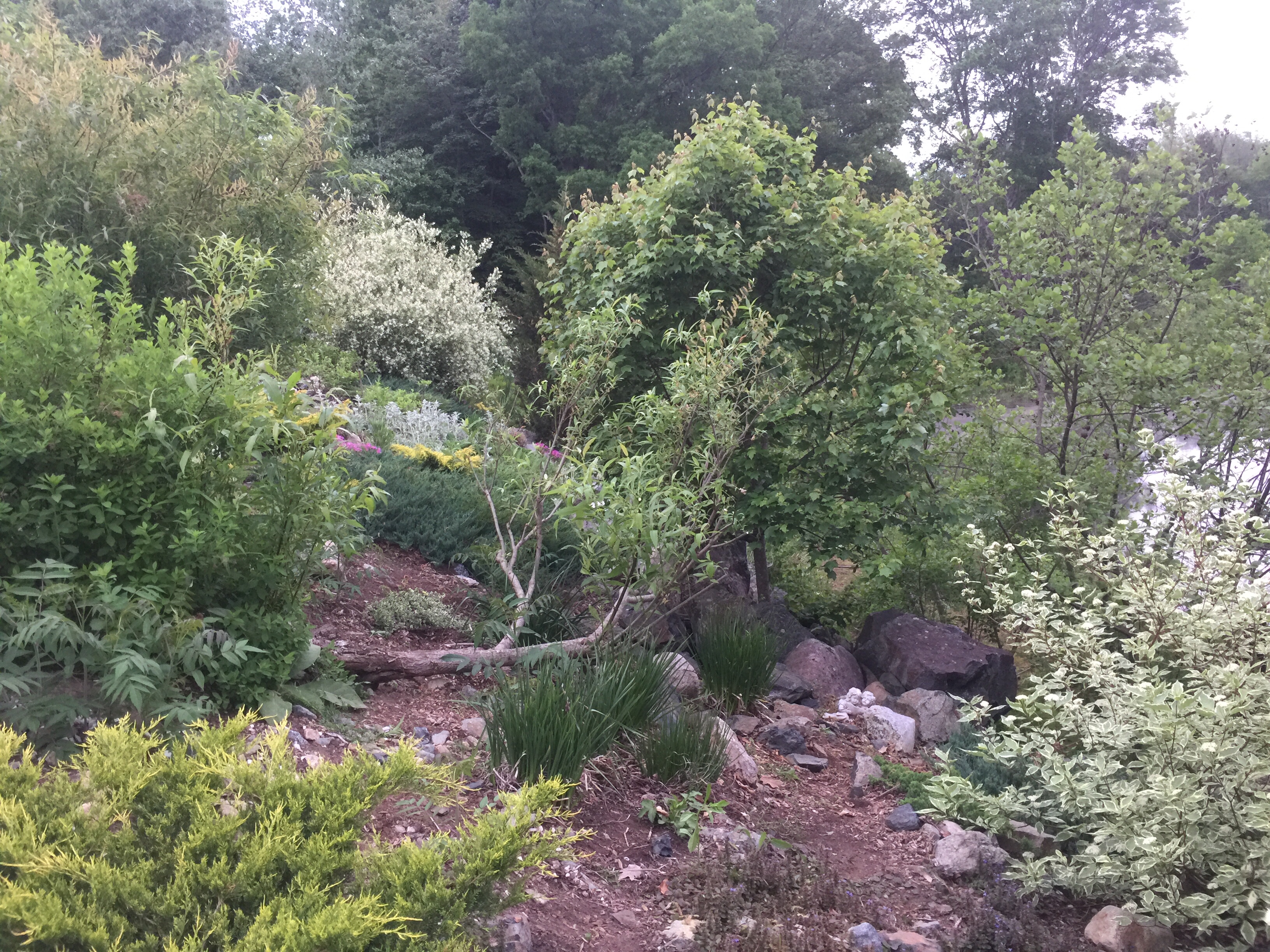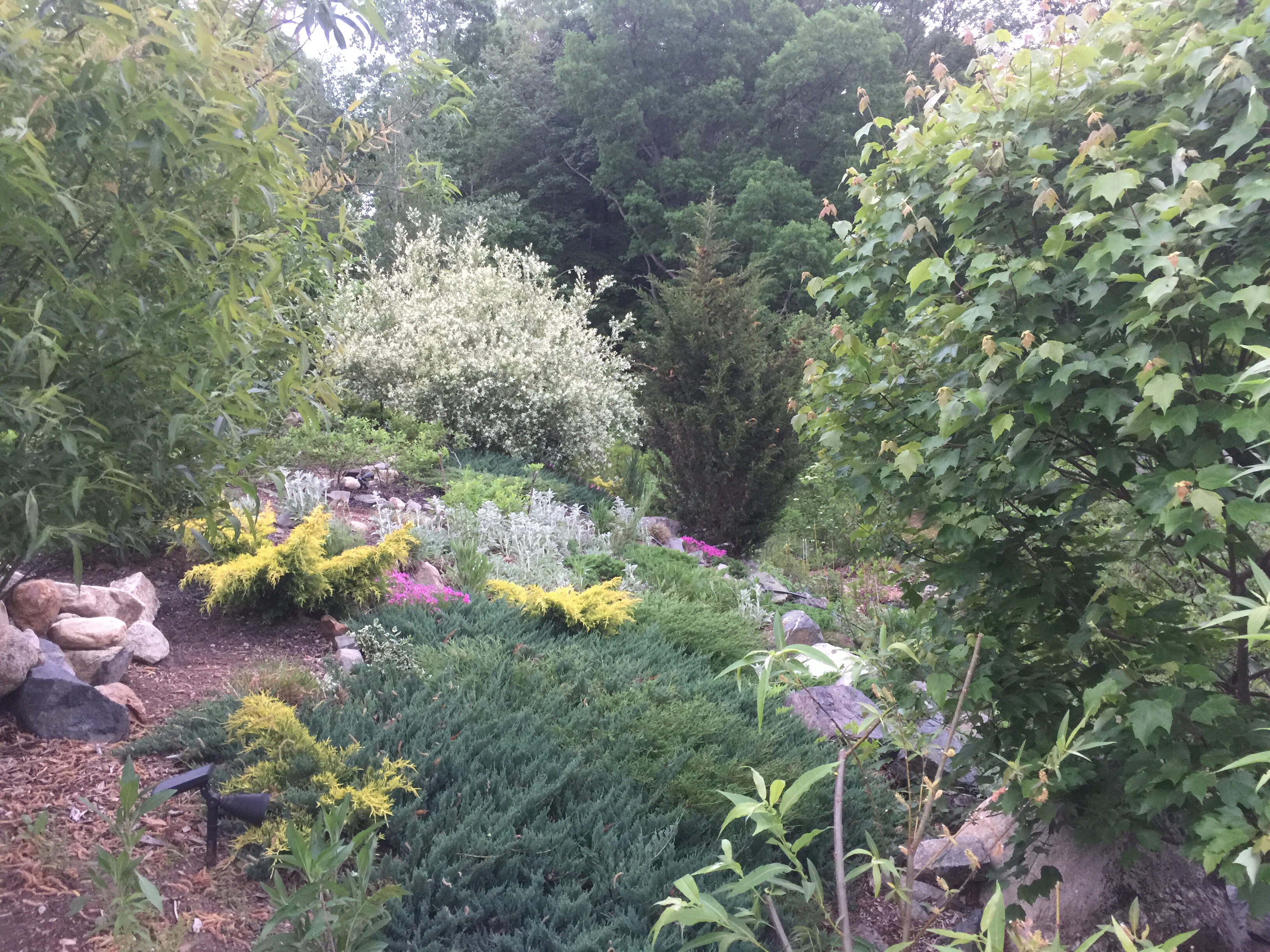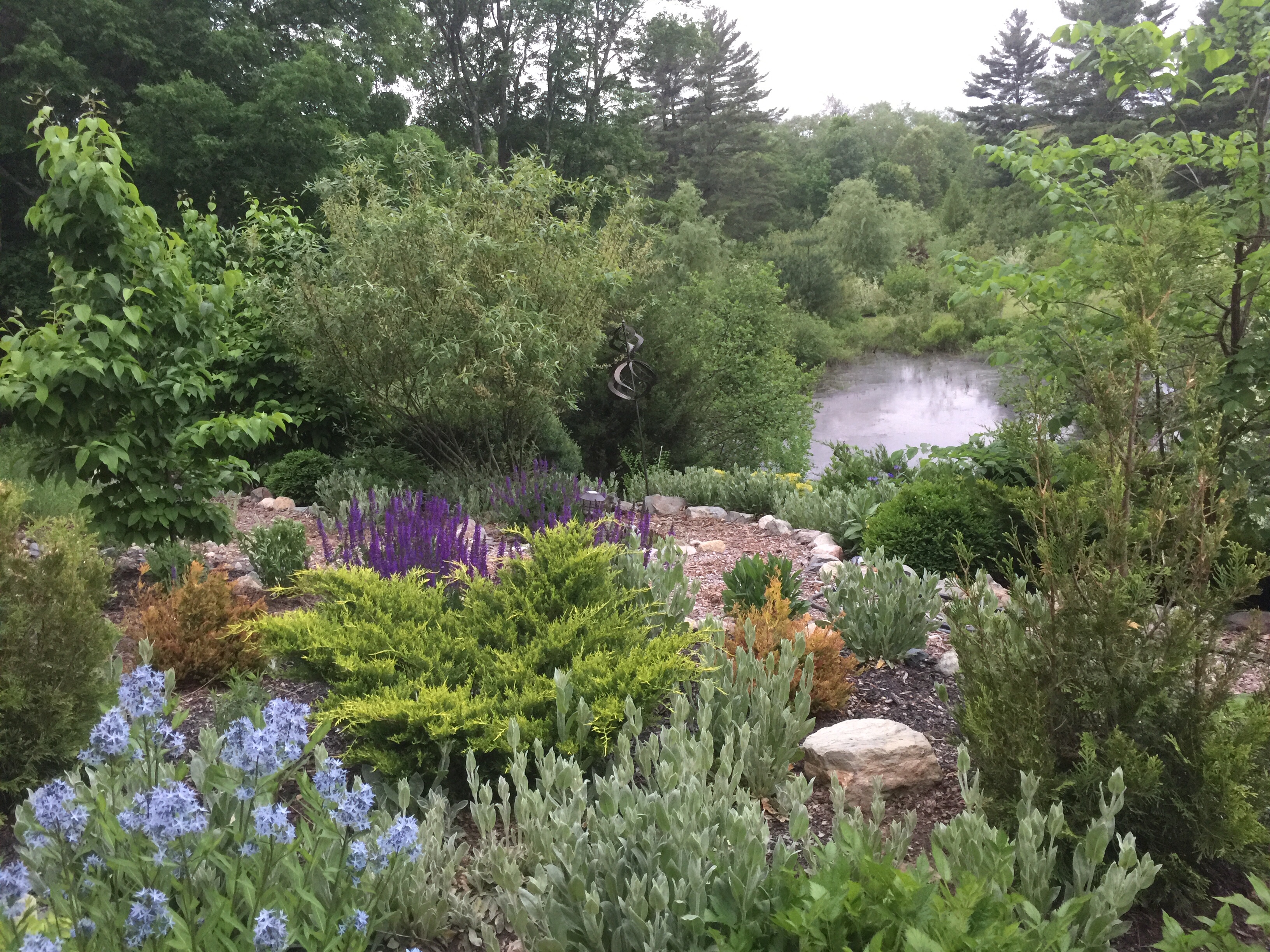This was this year’s burn pile, believe it or not, the circular area on this end of the “milkweed river.” Over the years, I’ve been experimenting with techniques, to prevent ugly burn scars from becoming summer-long eyesores. It may not look like much now, but it’s actually a huge accomplishment that this area is almost ready for its next cover crop (probably buckwheat).
A couple of weeks after burning, I raked it, lightly weeded it, then seeded it, just by hand, with Botanical Interests’ Cover Crop Soil Builder, Peas and Oats. I threw a light layer of compost and chips over it, then waited. The result? LOTS of green stuff, almost waist high! I probably waited a bit longer than I should have to deal with it then, but the only reason I procrastinated was because I couldn’t figure out whether to weed whack it or mow it, or just turn it all over with the backhoe. The backhoe didn’t seem like a good option, since that would probably just bring more of the old field’s weed seeds to the surface. And at that point, I wasn’t physically strong enough to weed whack or even scythe it.
It turned out to be a lot easier than I thought to deal with all the growth, simply because we happen to be lucky enough to own a riding mower with a “grass” collector. First, I fished around and made sure there were no large stones or rocks hiding anywhere. I set the mower blades at the highest possible setting and slowly drove halfway into the middle of the circle. That’s all it took – I already had to empty the bag – it was full. I made several passes in different directions, stopping to empty the bag frequently. At the end, I spread the abundant, nutritious clippings as evenly as possible over the area. It worked like a charm, acting as mulch, suppressing weeds and adding nitrogen and organic matter to the soil.
I went into detail with the description of what I did here, because it was hard to find a how-to online about it. A lot of folks that plant cover crops are farmers with equipment to handle entire fields. I didn’t even need our tractor, just the mower, as this is just a small area.
I’m feeling much more optimistic these days about burn piles and what can they morph into. One idea for this circle is to enclose it within deer fence and grow vegetables. Growing food is something we’ve never seemed to have time to do, while dealing with all the invasive plants. But now there’s a light at the end of the tunnel; I could see that perhaps happening.


